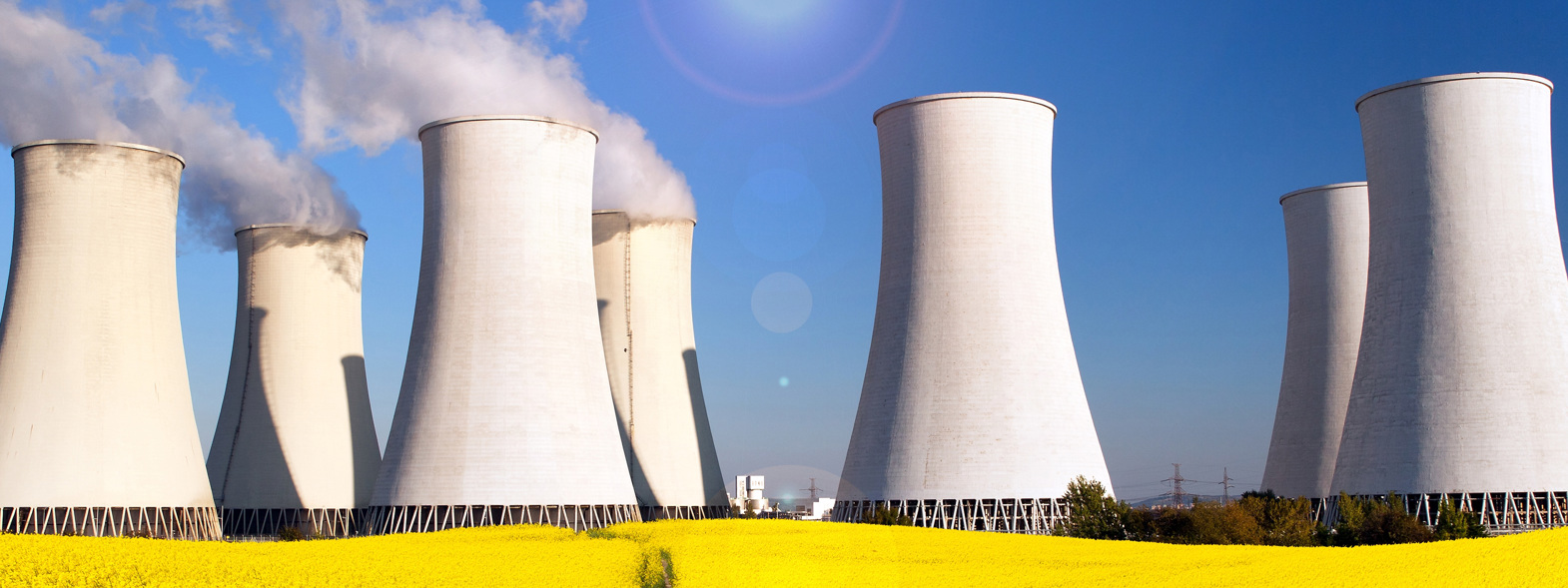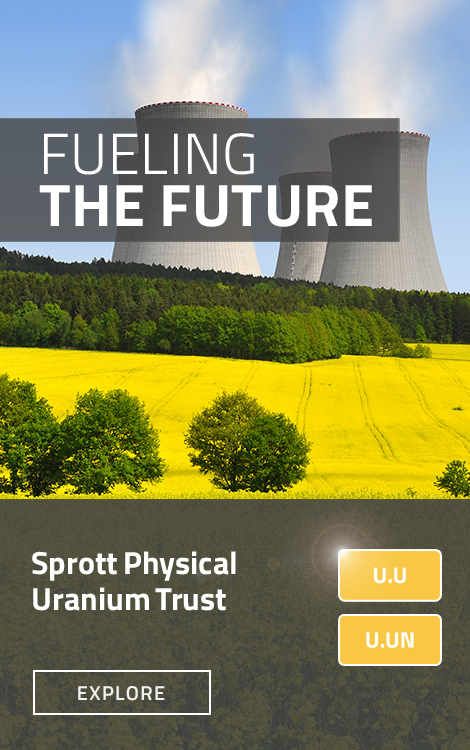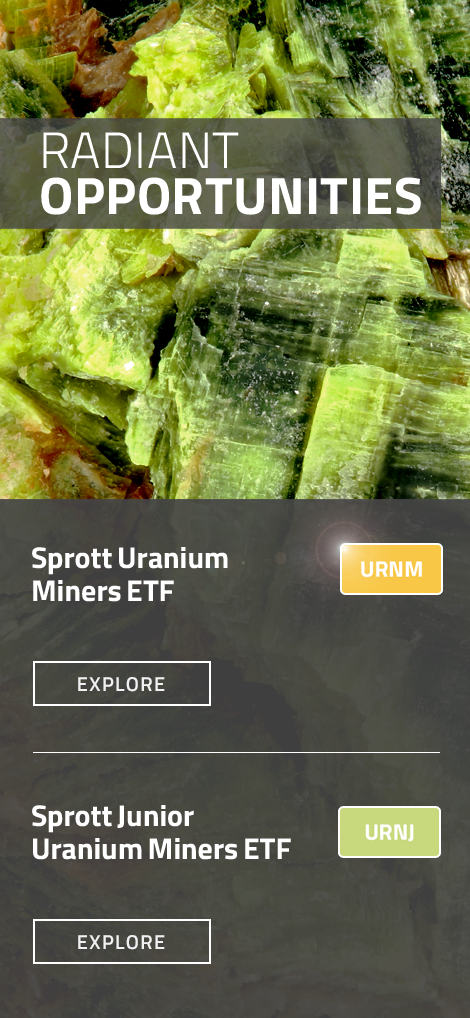September 22, 2025 | (8 mins 52 secs)
John Ciampaglia, CEO of Sprott Asset Management, discusses key takeaways from the September 2025 World Nuclear Symposium. He highlights surging uranium demand from rising electricity needs, AI data centers and energy security concerns, alongside growing tech-sector ties such as Microsoft joining the World Nuclear Association. With supply still constrained, Ciampaglia sees higher prices and new mining investment creating a strong backdrop for investors.
Video Transcript
Thalia Hayden: You are watching Metals in Motion. I'm Thalia Hayden with ETFguide. We are so glad to see you again.
Countries around the globe are realizing that to meet rising electricity demands and fight climate change, they need a clean and reliable energy source with high capacity output, pushing nuclear energy into the spotlight. This, of course, includes uranium, the required fuel source for nuclear energy. Besides being a major secular trend, it's also a mega investment trend. John Ciampaglia, CEO at Sprott Asset Management, helped us get to the bottom of all this. Welcome to the show, John. Great to see you again.
John Ciampaglia: Thanks for having me back. Good to chat.
Thalia Hayden: We understand you attended the 2025 World Nuclear Symposium in London. No doubt there was a lot to digest, but a major takeaway is that uranium demand is set to dramatically increase over the next five years as nuclear power gains momentum. What's driving this increasing demand?
John Ciampaglia: I think it's exactly what you said: increasing load growth. One interesting stat I came across was that July was the single largest use of electricity in U.S. history. Seasonal factors dictate that, but I think it is increasingly being acknowledged that things like AI data centers, which use large amounts of electricity and the reshoring of a lot of manufacturing, are contributing to much higher load growth. I think that's where nuclear energy comes into the story here because of its unique attributes to a grid, which are 24/7, 365 days a year, baseload power.
The grid needs stability to offset the intermittency of renewable energy. That's why I think there's a renewed interest in grid stability and load growth. For some countries, energy security and national security are obviously priorities.
Thalia Hayden: You just touched on how the partnership between the nuclear industry and large energy users, such as tech companies with AI data centers, was another highlight from the 2025 World Nuclear Symposium. Why do technology companies need nuclear energy, and is there evidence of business coordination between the tech sector and the nuclear industry?
John Ciampaglia: I thought the most interesting thing was that Microsoft is now a member of the World Nuclear Association, and they were there at the conference. I think that's telling because a few years ago, nobody would have predicted that one of the world's largest technology companies would be involved in nuclear energy. It's really about their aspirations around AI data centers. As I mentioned, they do consume huge amounts of power.
I think they're realizing not just Microsoft but Google and Meta and the other companies that their aspirations in this AI race with China are not about chips or people or building these facilities. A lot of the challenge is sourcing clean, firm energy that they can use to power these data centers. That's why these hyperscalers [large cloud and tech companies], as they're called, are looking to nuclear energy as part of the solution. They're still relying on renewable energy sources, other clean forms, and natural gas.
But nuclear is part of the solution they've realized in the last couple of years. That's why these hyperscalers are bringing their capital and people into the fold here. It is getting investors excited when some of the most valuable companies in the world are interested in this technology.
Thalia Hayden: That certainly makes sense. The growth of nuclear power means greater demand for uranium, the required fuel source. How is this impacting uranium prices? Do you think uranium miners will be able to meet demand?
John Ciampaglia: It’s a good question and was a key focal point of this conference. This is the world's largest nuclear energy conference every year in September. The association puts out a new supply-demand forecast every two years, which they did last week. What was very interesting about it is that in all three scenarios, the base case, the high case, and the low case, demand is growing much more than previously expected.
We went from an industry that grew maybe 1% per year to one forecast to grow 5% per year to 2040. That growth is driven by various factors, including new builds, restarts, and life extensions.
On the supply side, the question is: How will the industry meet this growing demand? It is a challenge because right before the conference, we had the two largest uranium miners worldwide, who signaled they're having some production challenges or limitations. That is a wake-up call that we need to see more production, we need to see higher prices to incentivize more uranium mining. That was a real theme of the conference: to meet these big growth aspirations, we must invest in uranium mining, which bodes well for the sector.
Thalia Hayden: This is an important discussion. You touched on this: How is the supply of uranium tied to energy security for nations around the globe?
John Ciampaglia: Countries will not build these multibillion-dollar facilities without knowing they've got a secure supply of the underlying fuel. I think China is the best case study here, as it has the most aggressive expansion plans for nuclear energy and is building upwards of 10 new reactors per year. In context, the U.S. has built two in the last 30 years. They are very aggressively building new plants and actively buying the required fuel.
We see China as the world’s largest and most consistent buyer of uranium, which has helped support the price. Over the last few years, the price has obviously more than doubled in response to all of these market signals we're getting. It's a very positive backdrop. You use the term megatrend, and, interestingly, I met a portfolio manager in London who runs a megatrend fund. She told me, "This is a megatrend they've identified, and they want to understand how to invest in it." I think it's a good anecdote around how people are looking at this investment thematic.
Thalia Hayden: John, one more thing before you go. To meet growing uranium demand, what's the potential outlook for uranium miners? Are new mines on the way, and will other operations be restarted? How could this be an investment opportunity?
John Ciampaglia: A few years ago, there was little interest in this space because pricing was not economic. At September's conference, one of the uranium development companies announced an agreement with the utility to deliver uranium. We're seeing more of these announcements. They're important because what's happening is these utilities realize they need to secure supply from multiple sources. They are willing to help fund the construction of these new uranium deposits, which is very important for these companies to generate revenue and cash flow.
We think we'll see more of these development companies bring their production to market in the next few years, helped in part by capital from the utility. This is a very strong backdrop in terms of pricing. Obviously, the demand is there, and utilities are willing to write checks to get these projects to market.
Thalia Hayden: John, it's always a pleasure to talk with you. Thank you so much for joining us. Keep up the great work.
John Ciampaglia: Thanks for having me.
Thalia Hayden: For U.S. investors, Sprott offers several ways to participate in the nuclear renaissance. Sprott manages ETFs linked to uranium miners and physical uranium. Visit sprottetfs.com to learn more.
Investment Risks and Important Disclosure
Relative to other sectors, precious metals and natural resources investments have higher headline risk and are more sensitive to changes in economic data, political or regulatory events, and underlying commodity price fluctuations. Risks related to extraction, storage and liquidity should also be considered.
Gold and precious metals are referred to with terms of art like "store of value," "safe haven" and "safe asset." These terms should not be construed to guarantee any form of investment safety. While “safe” assets like gold, Treasuries, money market funds and cash generally do not carry a high risk of loss relative to other asset classes, any asset may lose value, which may involve the complete loss of invested principal.
Past performance is no guarantee of future results. You cannot invest directly in an index. Investments, commentary and opinions are unique and may not be reflective of any other Sprott entity or affiliate. Forward-looking language should not be construed as predictive. While third-party sources are believed to be reliable, Sprott makes no guarantee as to their accuracy or timeliness. This information does not constitute an offer or solicitation and may not be relied upon or considered to be the rendering of tax, legal, accounting or professional advice.



